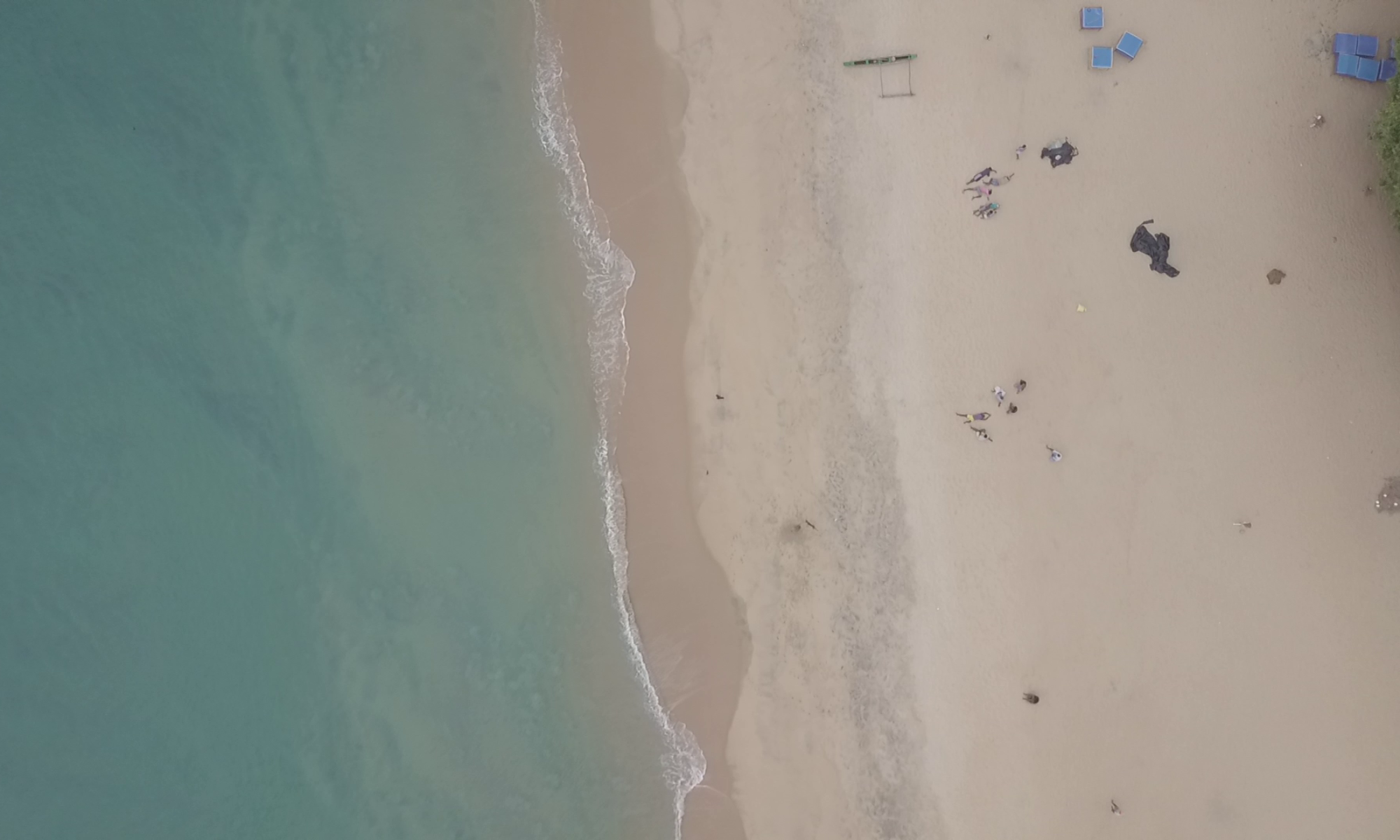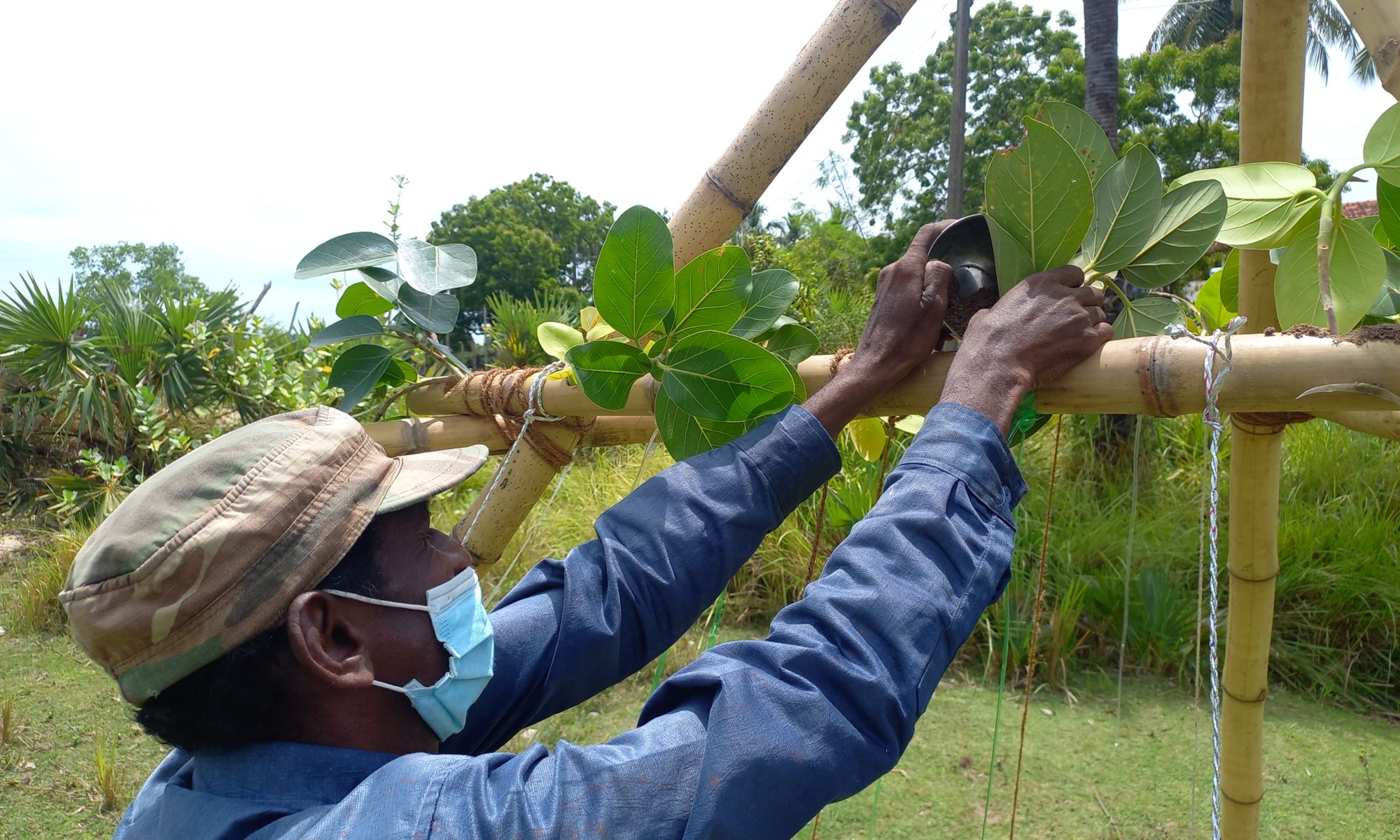Introduction
Fighouse was my project at Dinacon. I attended the conference for the second half of July.
Our objective is to research fig trees as a construction material in Batticaloa and other regions of similar subtropical climate. Planted on a scaffold, fig trees let down aerial roots, which are directed over an inhabitable structure. Once the roots anchor into the ground, the trees gain access to water and nutrients. Mechanically, the roots secure the structure against forces of nature. As the individuums inosculate, they form one organism. In contrast to a structure from dead wood, which rots in humid climate, a living structure is able to fend of pathogens. It adapts to the environment and grows stronger over time.
With the scaffold in place, the structure has use from day one. After years of growth, the scaffold is not needed anymore. It may be removed or left to rot. What remains is a self-sufficient living house. If regularly pruned and properly maintained, it will keep its purpose. Otherwise, it will go back to nature. In either case, not only have we helped remove carbon from the atmosphere, we have also created a small ecosystem.
Inspiration is drawn from the living root bridges in India’s Meghalaya region and from recent research, especially in the field of Baubotanik.
Shape

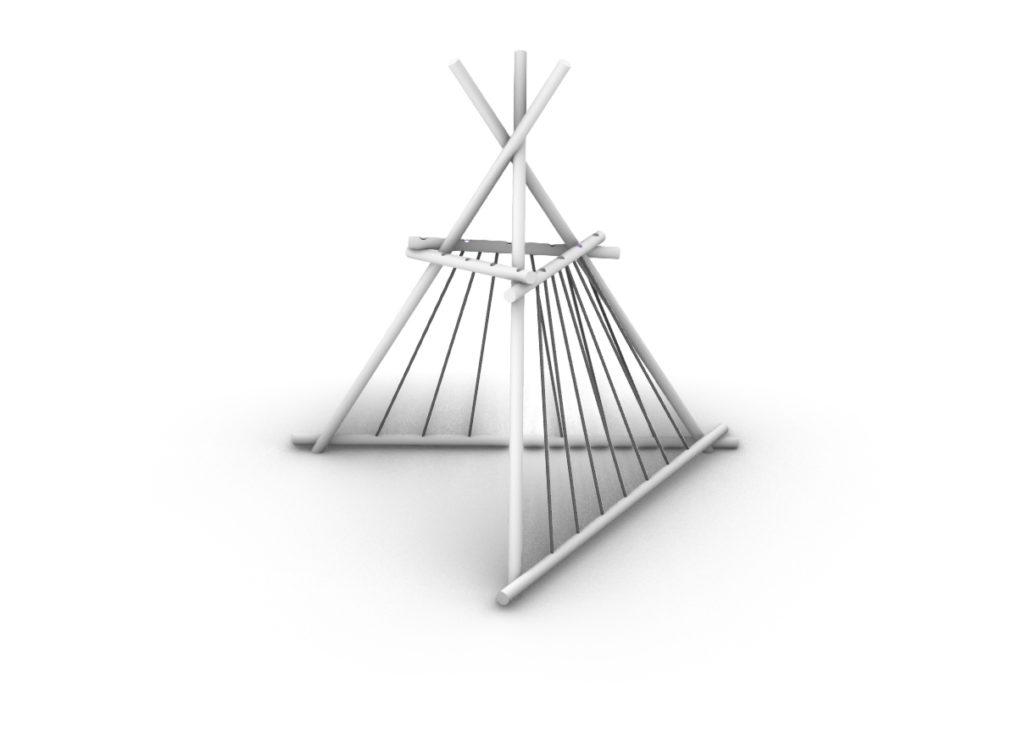
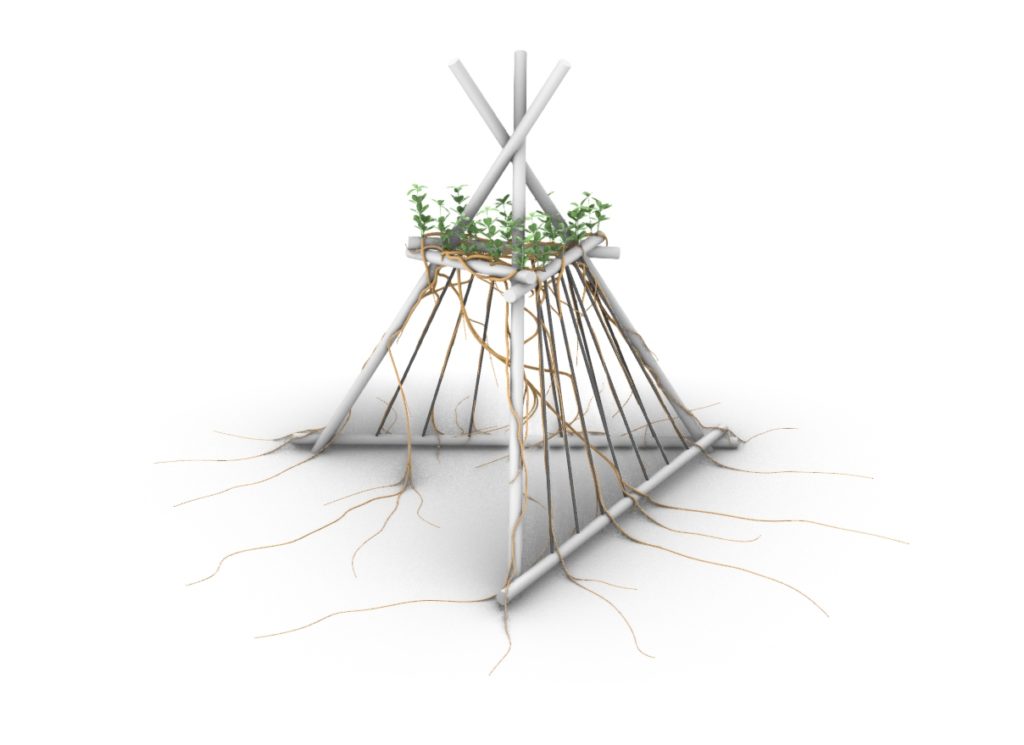
For Dinacon, a structure was needed that is simple to set up, and that is easy to maintain and possibly to replicate and improve upon. With bamboo readily available, and with experience of lashing, we decided on a tent like structure in the shape of tetrahedron. It provides shade for sitting inside.
Model
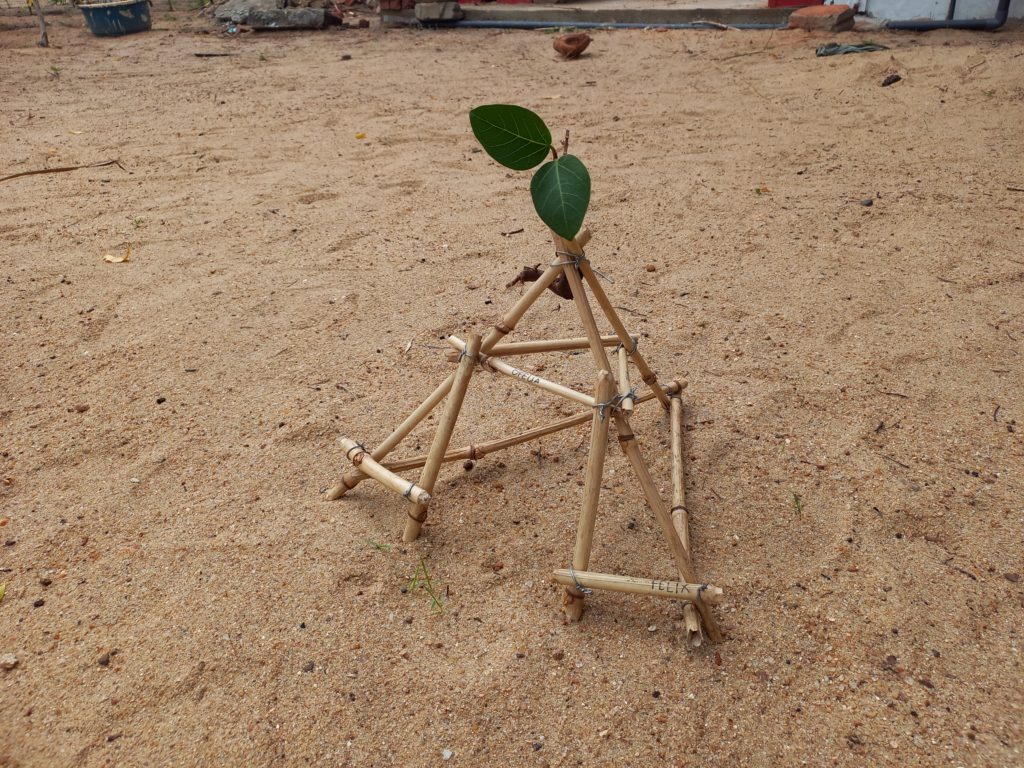
On July 27, using small bamboo sticks and left-overs of metal wire, a simple model was made to get a feel for the structure and how it would be assembled.
Bio Lab workshop
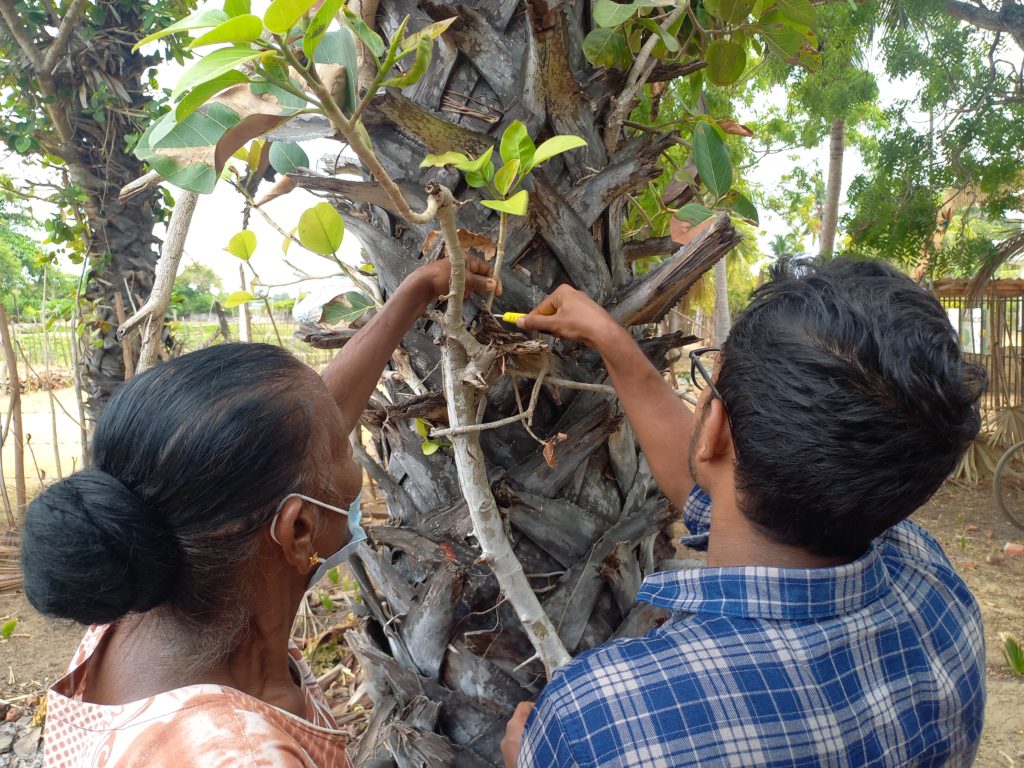
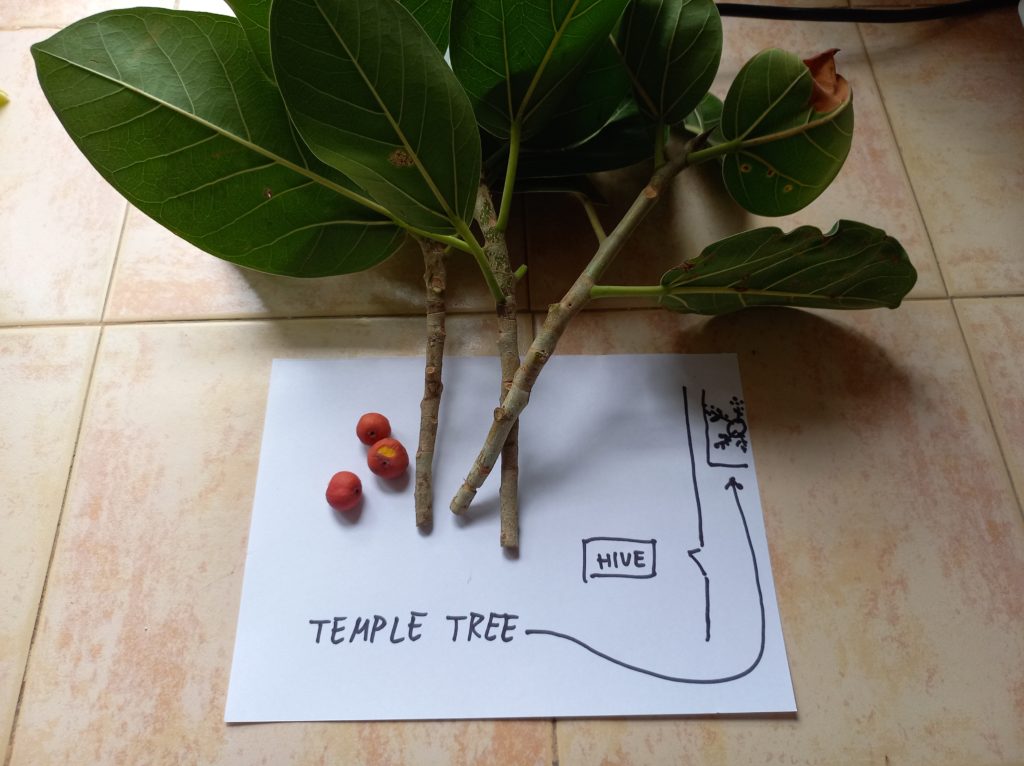
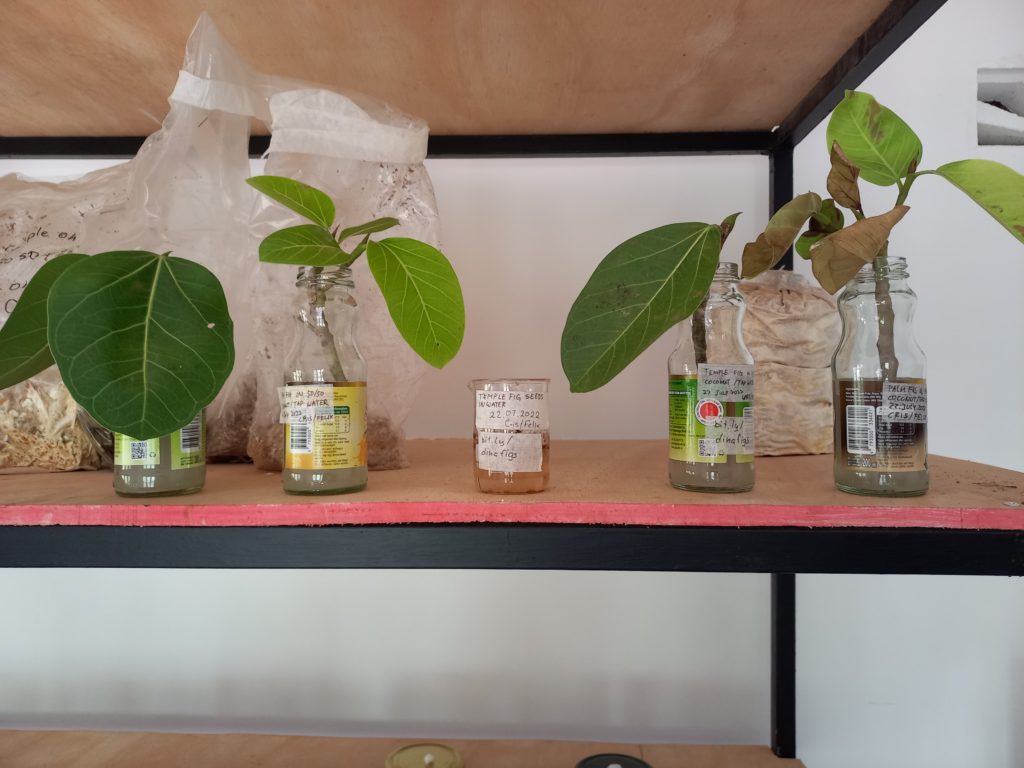
On July 22, Felix organized a workshop at the Bio Lab. First we obtained cuttings and seeds. Afterwards, under the guidance of the Bio Lab’s guardian Cris, and with advice from Subair, we prepared the collected material in jars with diluted coconut water. On July 28, Cris swapped out the water because it started to ferment. The cuttings and seeds are under observation. So far, they have not been used for construction.
Photogrammetry
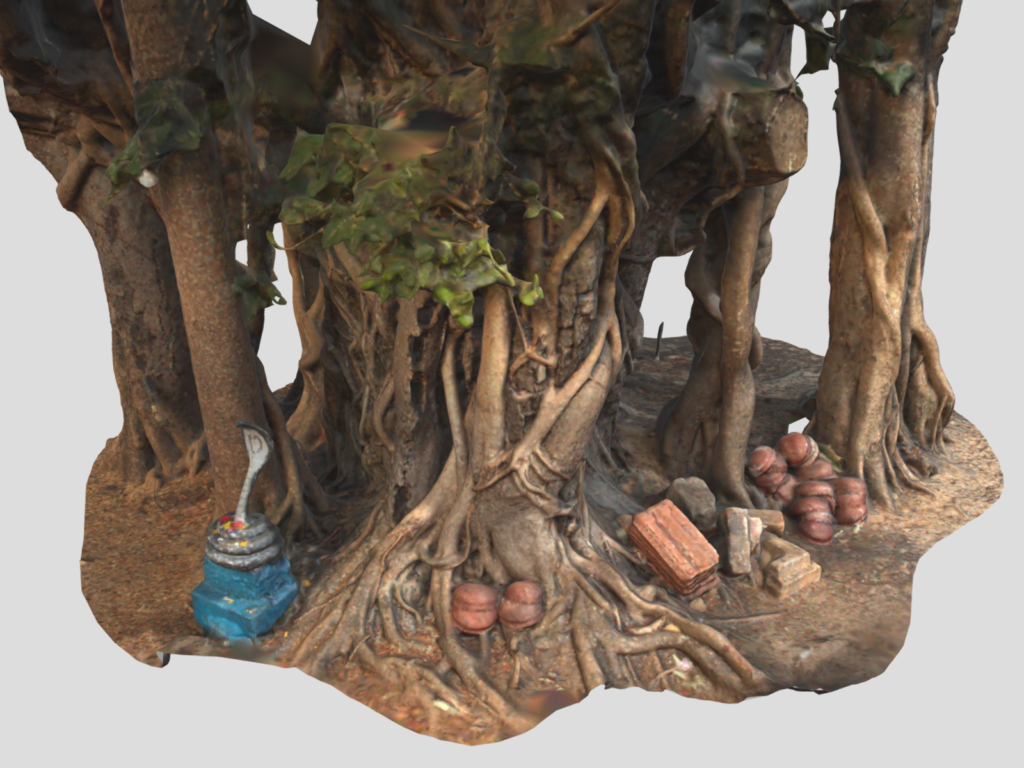
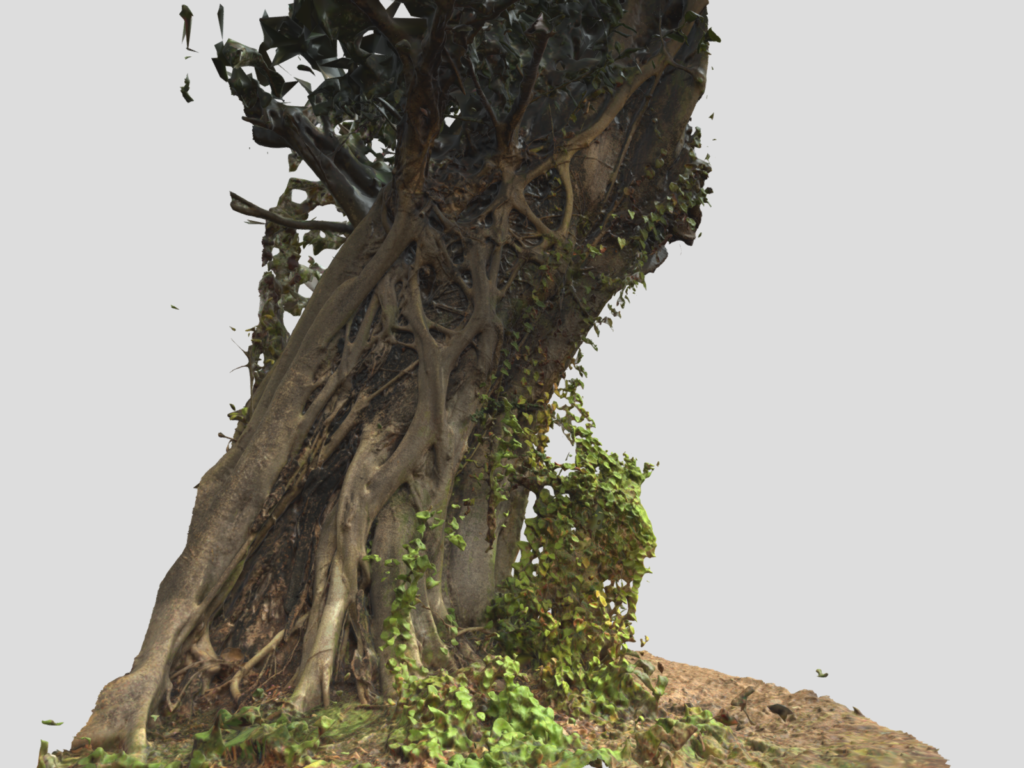
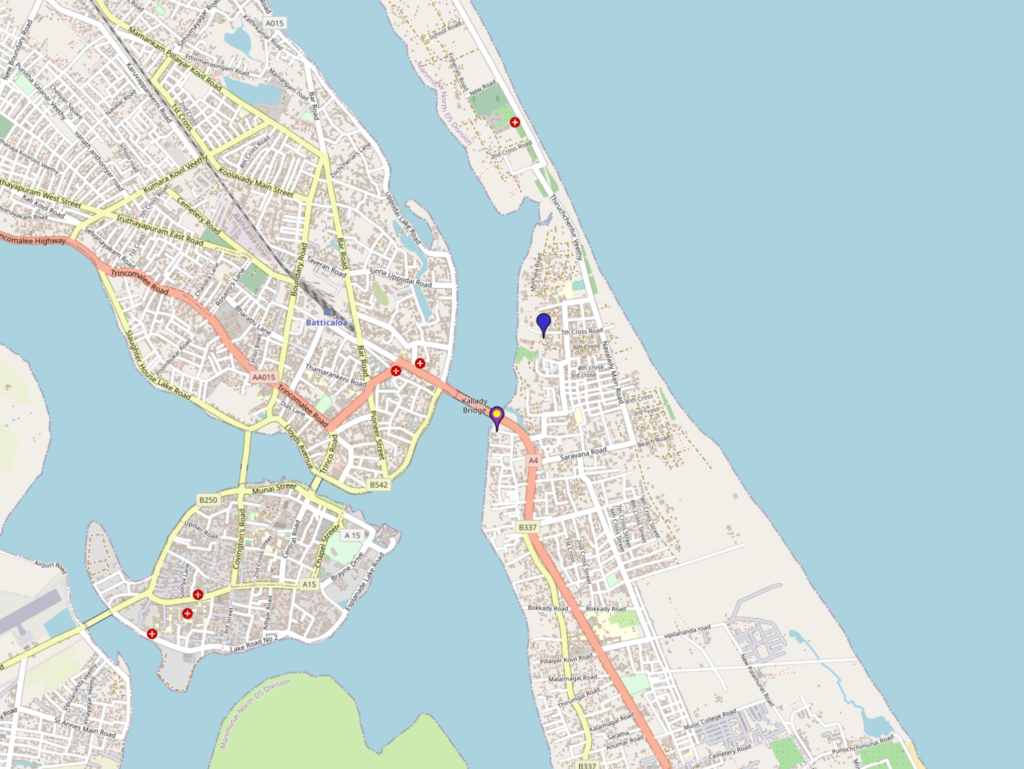
The trunks of two trees were digitized using photogrammetry:
iNaturalist



After an introduction during Ricardo’s July 20 Bioblitz workshop, Dinasaurs uploaded observations to iNaturalist. All fig trees used in the project appear to be of the species Indian banyan, also known by it’s scientific name ficus benghalensis. Observations by tree location:
Material
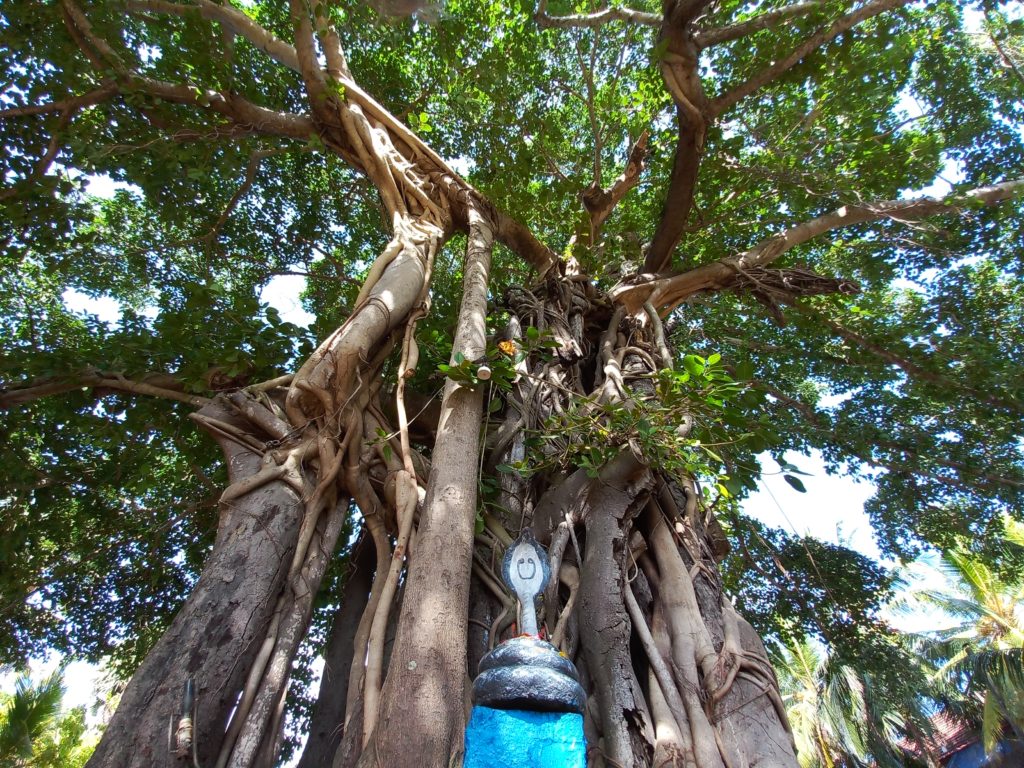
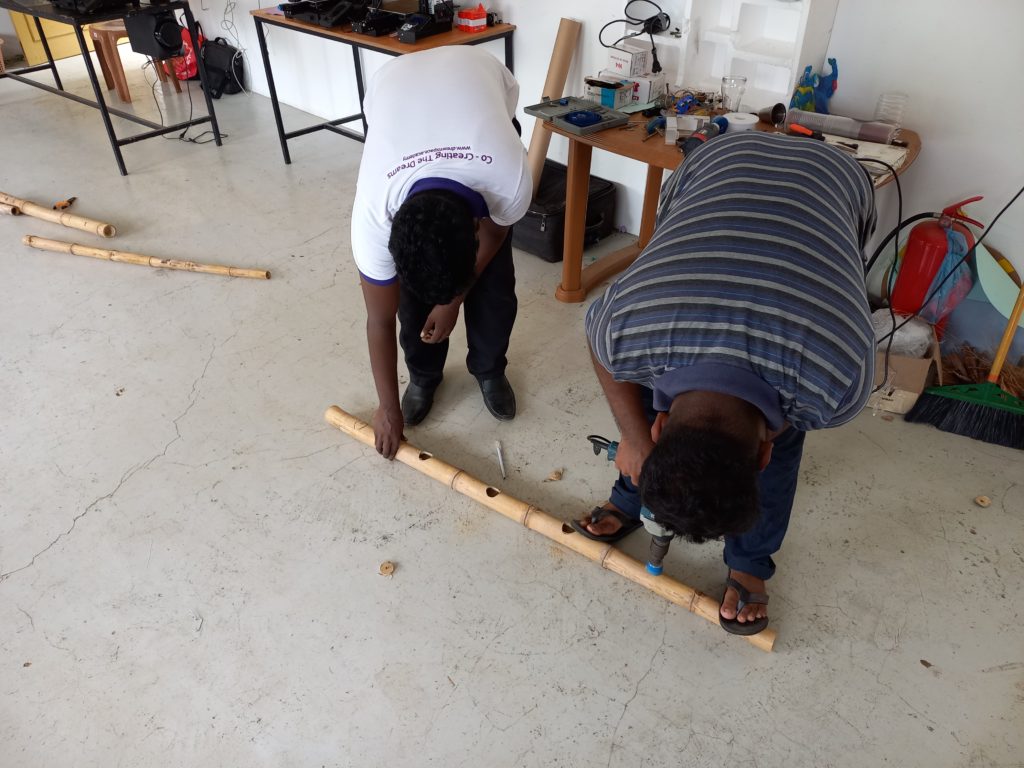
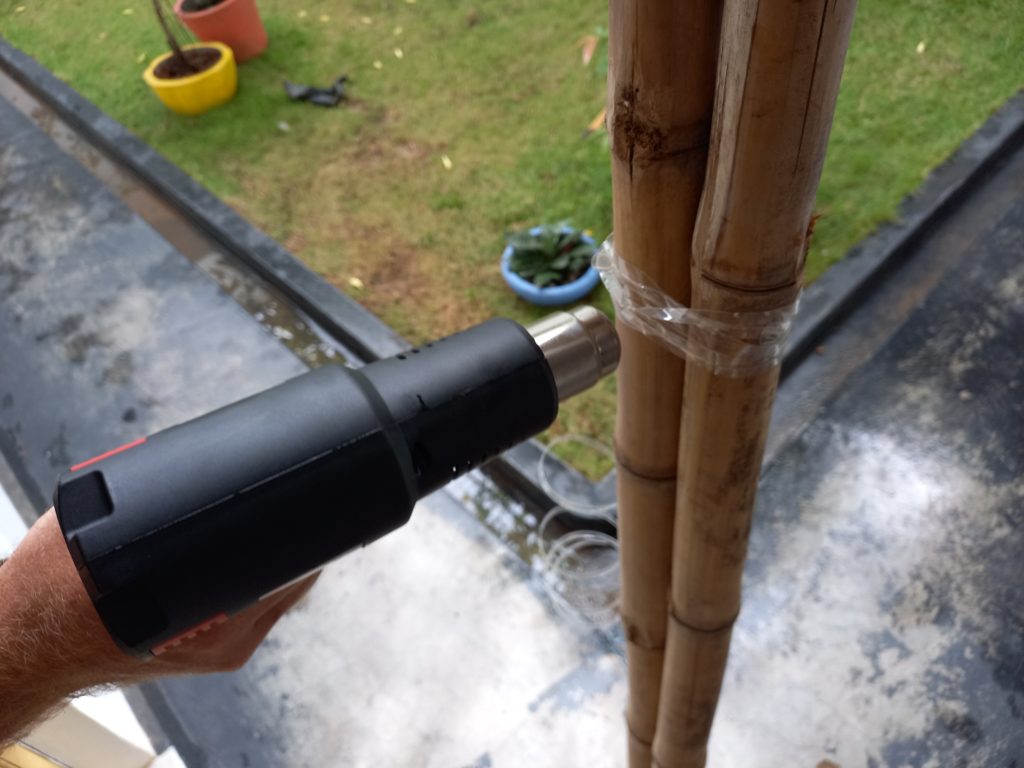
Figs and cuttings were obtained from fig trees in and around the DreamSpace Hive, including the Ganesha temple just outside the gate. Bamboo was provided by Thava, the owner of the adjacent Riviera Resort, home of Dinasaurs. Asides from coconut rope, we recycled PET strings cut from bottles. Andy showed how these can be used to create tight lashings when shrunk with a heat gun.
Realization
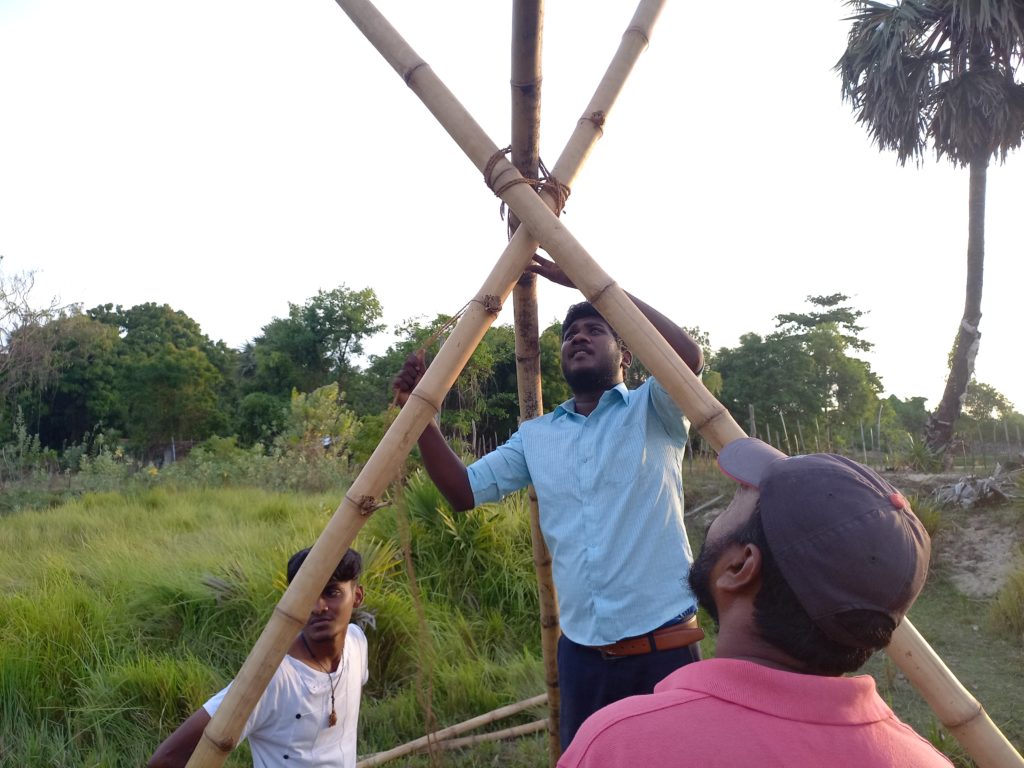
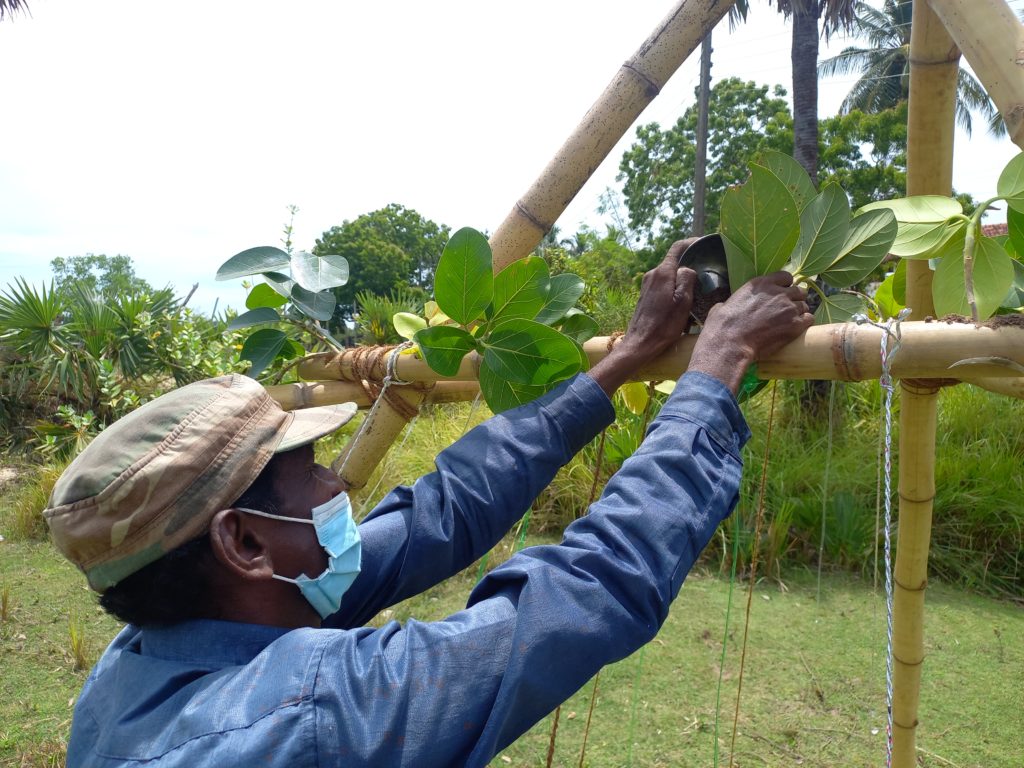
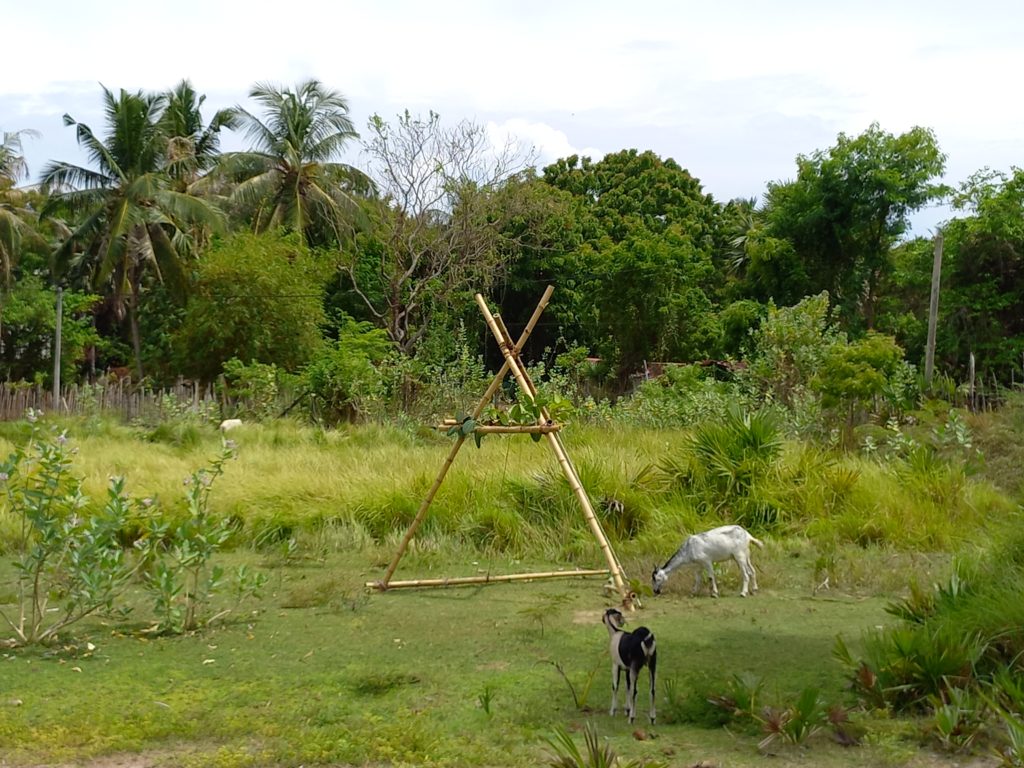
The site is across the dirt road from DreamSpace Hive. On July 29, we dug holes using a spade, then cut the bamboo with a jig saw. A tetrahedral base structure was erected and lashed with expertise from Ana, Dashan, and Kiri. The next morning, we started by preparing pieces of bamboo to be used as planters. Jeroushan drilled holes, one for each set of trees. Once the planters were in place, T. Janson, the DreamSpace gardener, filled each hole with a mix of soil and sand. We inserted fresh cuttings as well as a few ripe figs. To guide the roots to form a wall-like structure, we strung ropes and strings of recycled PET on two sides of the structure. The third side remains open for entry.
Outlook
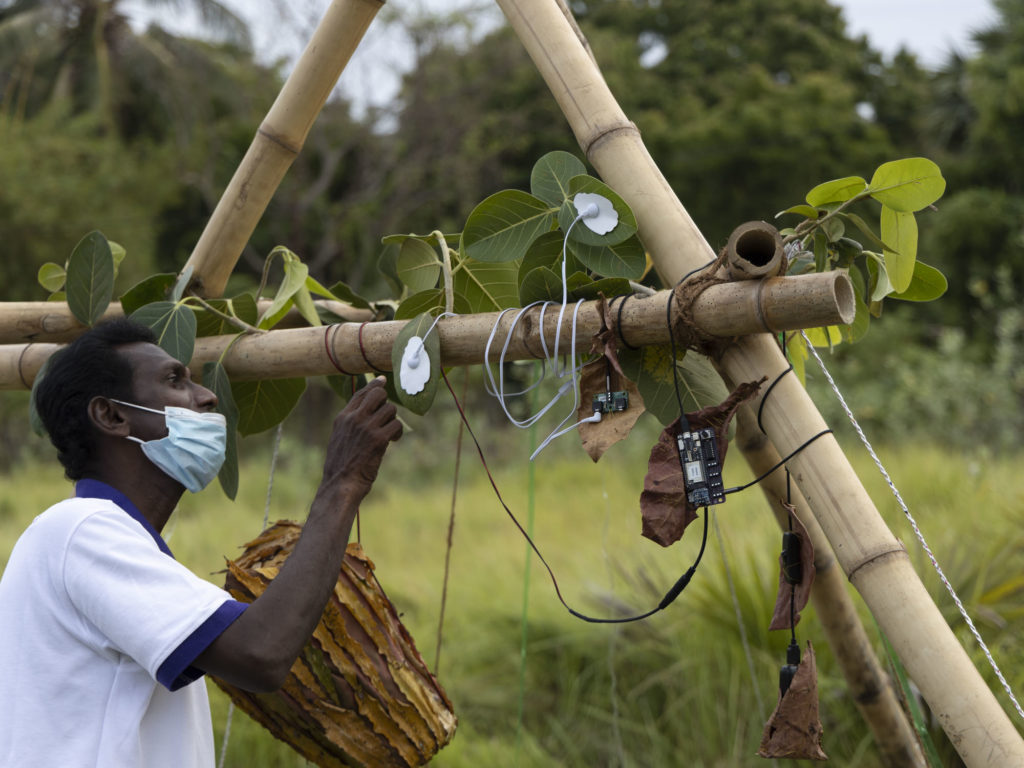
(photo by Michael Ang)
Already on the same day, use has been found for the structure. Michael Ang set up one of the data pods, he and Tegan had created at Dinacon. Sensors are connected to the fig leaves. A sound scape emerges from a speaker.
If all goes well, in a few years, the bamboo scaffold is overgrown by figs. The little house provides shelter for members and guests of DreamSpace Academy, and for the many animals visiting every day.
If it fails, then we will learn from mistakes! Perhaps the plants need a better controlled environment, they need more maintenance, or the structure is not strong enough to withstand winds, cows, and ants.
In any case, we should think about where to go from here. For example, how can plants provide sufficient cooling for us to better enjoy the indoors? Can we use the nearby ocean for cooling? What about Mangroves, could they be used instead of figs?
Eventually, we may find ways to transform and create ecosystems to give us a comfortable and modern life, without destroying nature. Let’s experiment!
Reading
- The DinaChronicles, 4th edition, page 9
- July 02/03 2022 fig workshop at Lancetilla botanical garden, Honduras, run by Jean, Soroush, and Felix
- Shanahan: Gods, Wasps and Stranglers (ISBN: 9781603587150)
- Ludwig, Middleton, Gallenmüller, Rogers, Speck: Living bridges using aerial roots of ficus elastica – an interdisciplinary perspective
- Reames: Arborscultpure (ISBN: 0-9647280-8-7)
- de Bruyn, Ludwig, Schwertfeger: Lebende Bauten (ISBN: 978-3-643-10483-0)
- Ludwig: Botanische Grundlagen der Baubotanik und deren Anwendung im Entwurf
- Block: Wir pflanzen eine Laube (ISBN: 978-3-936896-33-6)
- Watson: Lo-TEK (ISBN: 978-3-8365-7818-9)
- Middleton, Shu, Ludwig: Representing living architecture through skeleton reconstruction from point clouds
- C.Y.Jim (in particular his publication on ficus walls in Hong Kong)
- Tongliang Great Banyan
- Growing Strangler Figs in Coconuts. Ideation of Carbon-Negative, Living Infrastructure
